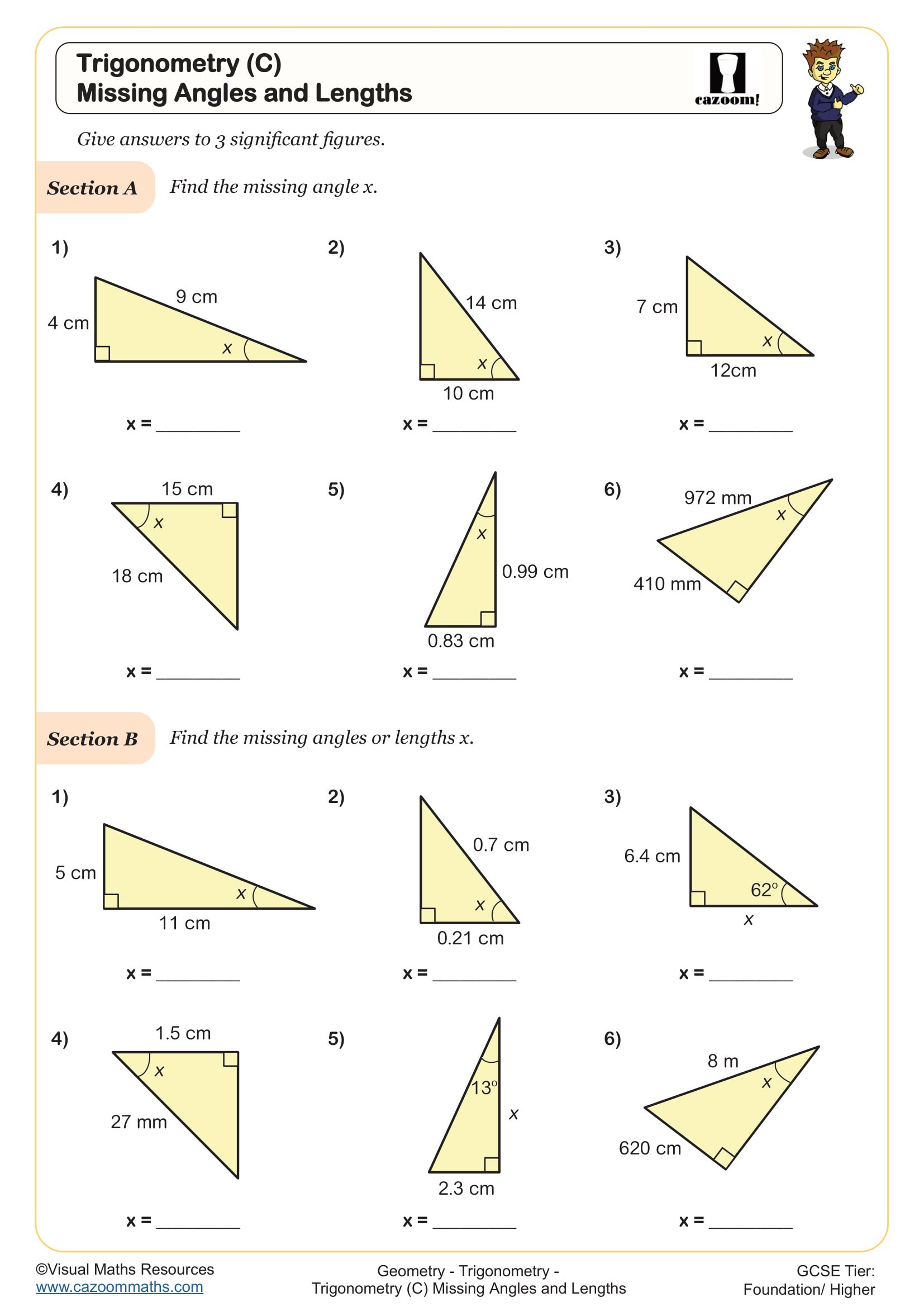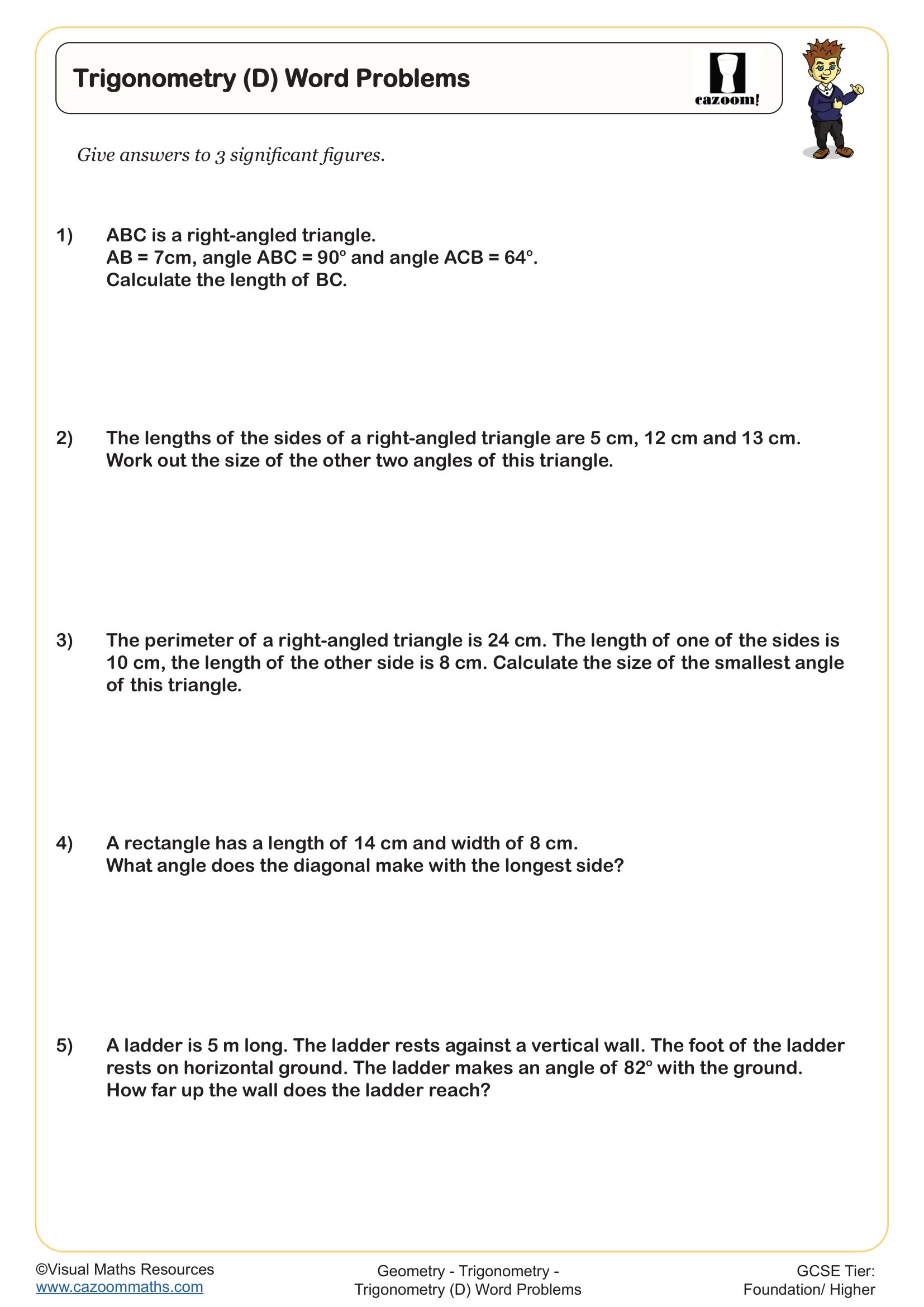Year 8 Trigonometry Worksheets
6 Benefits of Using Our 8 Trigonometry Worksheets PDF: Accelerate KS3 Progress
In Year 8, pupils extend earlier work on angles and similarity to formal trigonometric ratios. The worksheets require students to perform a consistent set of steps, which include identifying right-angled triangles and their sides, selecting ratios and performing calculations. The method establishes secure procedures which enable students to identify appropriate situations for trigonometry application. The worked examples demonstrate both the arrangement of information and the problem-solving approach, while the graded assignments help students work independently. The structured practice method helps students maintain their skills while making a smooth transition to Year 9.
Specific learning benefits include:
• Develops fluency with sine, cosine and tangent
• Builds efficient strategies for missing sides and angles
• Improves calculator use and sensible rounding
• Encourages method selection from diagrams and context
• Reinforces reasoning and step-by-step written working
• Prepares students for KS3 assessments and GCSE foundations
Struggling With Trigonometry? How Year 8 Maths Worksheets Solve the Problem
The collection progresses from measuring and exploring triangles to interpreting labelled diagrams, and then into the abstract use of SOHCAHTOA with calculator functions. Visual prompts ensure pupils understand the setup before moving to algebraic rearrangements. All worksheets include complete solutions so teachers can demonstrate the method and students can check progress reliably.
The worksheets in this collection include:
• Discovering Trigonometry (Investigation) — explore ratio patterns in right-angled triangles experimentally.
• Trigonometry (A) Missing Lengths — determine unknown sides using SOHCAHTOA and precise rounding.
• Trigonometry (B) – Missing Angles — find acute angles from ratios using inverse functions.
• Trigonometry (C) Missing Angles and Lengths — combine methods to link angles and side lengths efficiently.
• Trigonometry (D) Word Problems — interpret real contexts and choose the appropriate trigonometric ratio.
• Trigonometry (D) Word Problems (With Clues) — scaffolded hints support selection, setup, and checking.
Traditional Lessons or Worksheets? Why Teachers Rely on Our Year 8 Trigonometry Worksheets
Each sheet is classroom-ready, with crisp diagrams and well-structured progressions. The tasks follow a specific order, which enables every student to start with ease, yet provides additional challenging activities for students who need more difficulty. The solutions help teachers save time because they display both the work process and final answers, which enables students to model their work and check their answers, and get immediate feedback. The resources achieve an appropriate level of difficulty, making them suitable for students with diverse abilities, as well as for retrieval practice and focused intervention activities.
Where Year 8 Trigonometry Skills Show Up in Real-Life Tasks
Right-angled triangle reasoning extends beyond the classroom into practical decision-making.
• Estimating a building’s height using a clinometer and distance
• Planning roof pitch, ramps or stair angles in construction
• Calculating gradients on hiking maps and cycle routes
• Working out the camera elevation for clear photography or filming
• Determining angles for satellite dishes and solar panel tilt
• Analysing projectile components in science and sport
• Programming triangle-based movements in simple game design
• Surveying land boundaries with tapes, markers and bearings



